#kepler creates
Explore tagged Tumblr posts
Text

Quickie painting of the day, my otter, Kepler. still wishywashy on the fainting goat horns but it feels right.
if sonas are wishful projection and fantasy, it says a few things that all i want is to stop losing my pencils (and pens and brushes, styluses…) so bad that i gave the critter a paint brush tail.
0 notes
Text

#wolf 359#wolf 359 fanart#daniel jacobi#warren kepler#kepcobi#I can’t create anything substantial anymore#my art#Spotify
182 notes
·
View notes
Text
Also, last night my best friend (and co-creator of Kepler) was watching HTTYD and telling me about how Kepler-core Hiccup is and I said that Hiccup would actually make a great voiceclaim for any AU where Kep lives and grows up 😅😅 and I was talking about how fucked that is to my partner and they said we're this image
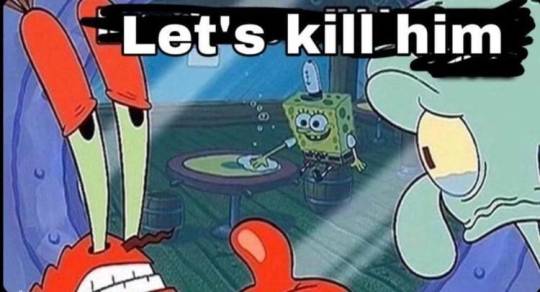
#jane journals#self insert talk#platonic f/o#familial f/o#🪐 kepler quinn 🪐#ben said when we created him we were like 'what a perfect boy! you know what would suck?'#AND YEAH THATS BASICALLY WHAT WE DID 😅😅#or more as we were conceptualizing him and starting to fall in love with him#we realized that there was a question lingering. would he survive order 66?#and the answer was no#some characters just werent meant to ; u ;#as they say the story is written and we cant do anything to change it#i guess technically we could thats what aus are for#but U DONT GET IT ITS THE NARRATIVE#ITS THE NATURE OF CHOICE AND CONSEQUENCES
9 notes
·
View notes
Text

For ten years he has been rotating in my mind.
7 notes
·
View notes
Text
changing our blog's name based on a spin we have with no idea how long it'll last? you bet!
#; kepler talks#i've been interested in this game since september#and even now the interest isn't really going away#so i hope it'll stay#honestly every now & again i think of creating a new blog but idk
0 notes
Text

A simulated image of NASA’s Nancy Grace Roman Space Telescope’s future observations toward the center of our galaxy, spanning less than 1 percent of the total area of Roman’s Galactic Bulge Time-Domain Survey. The simulated stars were drawn from the Besançon Galactic Model.
Exploring the Changing Universe with the Roman Space Telescope
The view from your backyard might paint the universe as an unchanging realm, where only twinkling stars and nearby objects, like satellites and meteors, stray from the apparent constancy. But stargazing through NASA’s upcoming Nancy Grace Roman Space Telescope will offer a front row seat to a dazzling display of cosmic fireworks sparkling across the sky.
Roman will view extremely faint infrared light, which has longer wavelengths than our eyes can see. Two of the mission’s core observing programs will monitor specific patches of the sky. Stitching the results together like stop-motion animation will create movies that reveal changing objects and fleeting events that would otherwise be hidden from our view.
youtube
Watch this video to learn about time-domain astronomy and how time will be a key element in NASA’s Nancy Grace Roman Space Telescope’s galactic bulge survey. Credit: NASA’s Goddard Space Flight Center
This type of science, called time-domain astronomy, is difficult for telescopes that have smaller views of space. Roman’s large field of view will help us see huge swaths of the universe. Instead of always looking at specific things and events astronomers have already identified, Roman will be able to repeatedly observe large areas of the sky to catch phenomena scientists can't predict. Then astronomers can find things no one knew were there!
One of Roman’s main surveys, the Galactic Bulge Time-Domain Survey, will monitor hundreds of millions of stars toward the center of our Milky Way galaxy. Astronomers will see many of the stars appear to flash or flicker over time.
youtube
This animation illustrates the concept of gravitational microlensing. When one star in the sky appears to pass nearly in front of another, the light rays of the background source star are bent due to the warped space-time around the foreground star. The closer star is then a virtual magnifying glass, amplifying the brightness of the background source star, so we refer to the foreground star as the lens star. If the lens star harbors a planetary system, then those planets can also act as lenses, each one producing a short change in the brightness of the source. Thus, we discover the presence of each exoplanet, and measure its mass and how far it is from its star. Credit: NASA's Goddard Space Flight Center Conceptual Image Lab
That can happen when something like a star or planet moves in front of a background star from our point of view. Because anything with mass warps the fabric of space-time, light from the distant star bends around the nearer object as it passes by. That makes the nearer object act as a natural magnifying glass, creating a temporary spike in the brightness of the background star’s light. That signal lets astronomers know there’s an intervening object, even if they can’t see it directly.
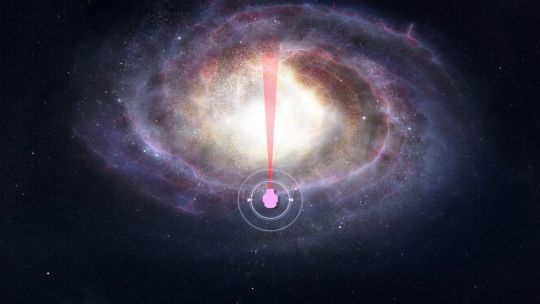
This artist’s concept shows the region of the Milky Way NASA’s Nancy Grace Roman Space Telescope’s Galactic Bulge Time-Domain Survey will cover – relatively uncharted territory when it comes to planet-finding. That’s important because the way planets form and evolve may be different depending on where in the galaxy they’re located. Our solar system is situated near the outskirts of the Milky Way, about halfway out on one of the galaxy’s spiral arms. A recent Kepler Space Telescope study showed that stars on the fringes of the Milky Way possess fewer of the most common planet types that have been detected so far. Roman will search in the opposite direction, toward the center of the galaxy, and could find differences in that galactic neighborhood, too.
Using this method, called microlensing, Roman will likely set a new record for the farthest-known exoplanet. That would offer a glimpse of a different galactic neighborhood that could be home to worlds quite unlike the more than 5,500 that are currently known. Roman’s microlensing observations will also find starless planets, black holes, neutron stars, and more!
youtube
This animation shows a planet crossing in front of, or transiting, its host star and the corresponding light curve astronomers would see. Using this technique, scientists anticipate NASA’s Nancy Grace Roman Space Telescope could find 100,000 new worlds. Credit: NASA’s Goddard Space Flight Center/Chris Smith (USRA/GESTAR)
Stars Roman sees may also appear to flicker when a planet crosses in front of, or transits, its host star as it orbits. Roman could find 100,000 planets this way! Small icy objects that haunt the outskirts of our own solar system, known as Kuiper belt objects, may occasionally pass in front of faraway stars Roman sees, too. Astronomers will be able to see how much water the Kuiper belt objects have because the ice absorbs specific wavelengths of infrared light, providing a “fingerprint” of its presence. This will give us a window into our solar system’s early days.
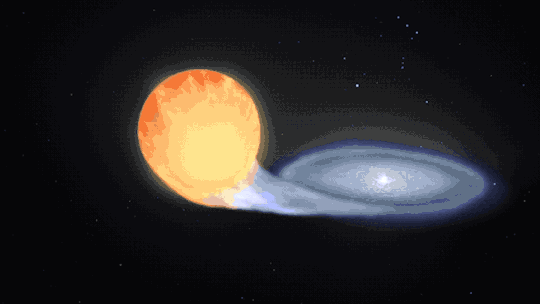
This animation visualizes a type Ia supernova.
Roman’s High Latitude Time-Domain Survey will look beyond our galaxy to hunt for type Ia supernovas. These exploding stars originate from some binary star systems that contain at least one white dwarf – the small, hot core remnant of a Sun-like star. In some cases, the dwarf may siphon material from its companion. This triggers a runaway reaction that ultimately detonates the thief once it reaches a specific point where it has gained so much mass that it becomes unstable.
youtube
NASA’s upcoming Nancy Grace Roman Space Telescope will see thousands of exploding stars called supernovae across vast stretches of time and space. Using these observations, astronomers aim to shine a light on several cosmic mysteries, providing a window onto the universe’s distant past. Credit: NASA’s Goddard Space Flight Center
Since these rare explosions each peak at a similar, known intrinsic brightness, astronomers can use them to determine how far away they are by simply measuring how bright they appear. Astronomers will use Roman to study the light of these supernovas to find out how quickly they appear to be moving away from us.
By comparing how fast they’re receding at different distances, scientists can trace cosmic expansion over time. This will help us understand whether and how dark energy – the unexplained pressure thought to speed up the universe’s expansion – has changed throughout the history of the universe.
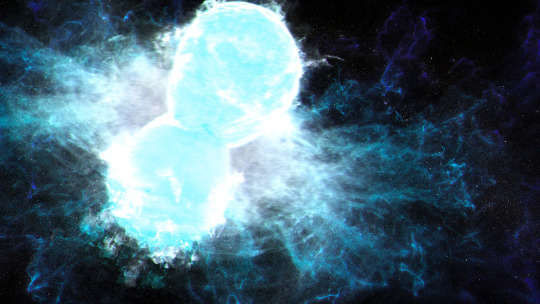
NASA’s Nancy Grace Roman Space Telescope will survey the same areas of the sky every few days. Researchers will mine this data to identify kilonovas – explosions that happen when two neutron stars or a neutron star and a black hole collide and merge. When these collisions happen, a fraction of the resulting debris is ejected as jets, which move near the speed of light. The remaining debris produces hot, glowing, neutron-rich clouds that forge heavy elements, like gold and platinum. Roman’s extensive data will help astronomers better identify how often these events occur, how much energy they give off, and how near or far they are.
And since this survey will repeatedly observe the same large vista of space, scientists will also see sporadic events like neutron stars colliding and stars being swept into black holes. Roman could even find new types of objects and events that astronomers have never seen before!
Learn more about the exciting science Roman will investigate on X and Facebook.
Make sure to follow us on Tumblr for your regular dose of space!
#NASA#astronomy#telescope#Roman Space Telescope#dark energy#galaxies#cosmology#astrophysics#stars#galaxy#space images#time#supernova#Nancy Grace Roman#black holes#neutron stars#kilonova#rogue planets#exoplanets#space#science#tech#technology#Youtube
3K notes
·
View notes
Text

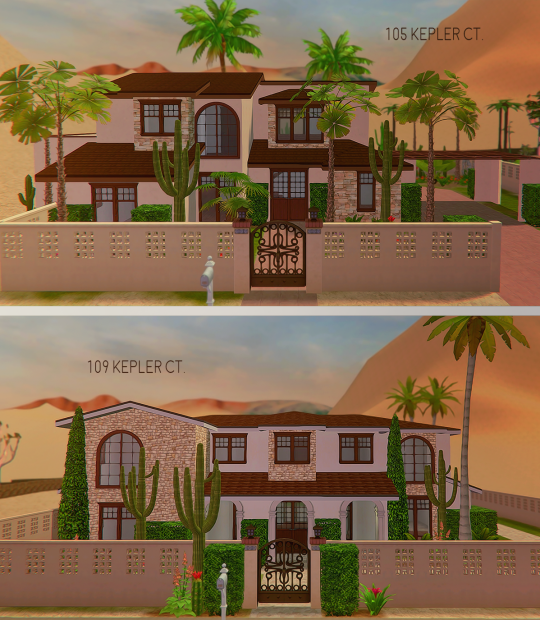

kepler ct.
a set of unfurnished strangetown inspired family homes.
[warning: long post.... download + more photos under the cut]
hello everyone! my first official post here is a gift of four lots i spent this weekend building. they range from 3 to 8 (... i know) bedrooms, and are meant to go together as a small 'neighborhood' of sorts.
in my own personal strangetown, i've used hoodreplacer to change the terrain (this one specifically) to have more roads available, so these were created for that in mind, however these lots could easily be used in any other setting you wish! i think they'd be super cute in the monty side of veronaville.
anyway... enough rambling here is some more info + photos of the lots!
REQUIRED CC TO DOWNLOAD:
All: Thorpe Build Set by Veranka
102: Waterfront Double Arch (TSR LINK) by Windkeeper
103: Waterfront Double Arch (TSR LINK) by Windkeeper & Waterfront Two Tile Window (TSR Link) by Windkeeper & 4t2 Spanish Inquisition Gate by Kaleigh-83 & Recolors of Simogical Winding Stairs by Whysim
105: Waterfront Two Tile Window (TSR Link) by Windkeeper & 4t2 Spanish Inquisition Gate by Kaleigh-83 & Matching Gate by Cleudosims
109: Matching Gate by Cleudosims & Little Women Arch by BeautifulNerdKitty
102 Kepler Ct. - 3 bedrooms, 2 bathrooms


[DOWNLOAD 102 KEPLER CT.]
103 Kepler Ct - 3 bedrooms, 3 bathrooms


[DOWNLOAD 103 KEPLER CT.]
105 Kepler Ct. - 3 bedrooms, 3 bathrooms


[DOWNLOAD 105 KEPLER CT.]
109 Kepler Ct. - 8 bedrooms, 5 bathrooms, 2 bonus rooms


[DOWNLOAD 109 KEPLER CT.]
as this is my first time ever uploading sims 2 lots, please let me know if anything is wrong or buggy. you're more than welcome to do whatever you please with these builds (other than lock them behind some sort of monetized paywall) all i ask is please tag me with whatever you do with them! id love to see :)
950 notes
·
View notes
Text

Here's the illustration I created for the @thylabang 2024, The Shore Leave Reverse Bang! My idea was to draw Spock and Kirk in the Lower Decks style, engaged in typical Lower Deck-ian shenanigans. My amazing partner kettleknight wrote 'The Kraken on Kepler-3b' to go along with it, go check it out!
#alec draws#spirk#t’hy’la bang 2024#shore leave bang#spock#jim kirk#james t kirk#jim t kirk#captain kirk#schn tgai spock#star trek tos#star trek the original series#star trek lower decks#lower decks#star trek lwd#tos spirk#star trek#star trek fanart
892 notes
·
View notes
Text
RANDOM ASTRO TAKES #5

I love how everyone more or less agrees, there are exceptions, that childhood is the prime of life, when the 2 are associated with the summer signs, Leo and Cancer, signs of the Sun and Moon, which are analogies with the 4/5th houses, those of family happiness.
Prime of people or something can be where are Leo/5H/Sun or 5/17/29 degrees in the chart.
We can see below how Marylin Monroe had created a timeless style, she has Neptune (photogenic) exalted (favors) in Leo (shine)/1H(body), ruler of Uranus (unique) in 8H (power)/Pisces (final step of something), square (intensity) Saturn (timeless) in Scorpio (influence)/4H (grounded in the past).
(It’s Sabrina Carpenter)



Gemini Moon can be popular to be smart/intelligent with good body/mind coordination, some examples : Kepler, Obama, Freud, Messi, Edith Piaf, Dostoevsky, Ella Fitzgerald, Pelé, Ronaldinho, Louis Pasteur, Houdini, Barbara Walters, Confucius, Italia, Turkey, Netherlands.
But we have also the dark side (dumb moves) : Start of slavery in America, Mussolini, Poutine.
Kendrick Lamar living his return of Mars and Jupiter transiting on his 9H is truly a bless to expose an opp, Drake, and be rewarded for that..😭

The horizon is Aries/Libra. Yes, it's the 1st and 7th houses, but who's the analogy? So, starting from this principle, let's look at history. It's always torn between war and peace, individualism and collectivism, chaos and order, rights and duties, self and others. That opposition is the most complementary, it’s the perfect balance between the laws that rule the world and universe. Theirs archetypes are the most impactful in history because they are in tune with the environment. Theirs rulers by exaltation, Sun and Saturn, are the limits of our solar system from the Antiquity to the discovery of Uranus, Saturn was the firmament, the 7th sky.

#astrology#zodiac#astro notes#witchcraft#astro observations#birth chart#astrotakes#kendrick lamar#marylin monroe#gemini moon#Leo#cancer#5th house
124 notes
·
View notes
Text
Writing Notes: Science Fiction

Science fiction - a genre of speculative fiction that contains imagined elements that don’t exist in the real world.
It spans a wide range of themes that often explore time travel, space travel, are set in the future, and deal with the consequences of technological and scientific advances
Subgenres & Related Genres of Science Fiction
Fantasy fiction: Sci-fi stories inspired by mythology and folklore that often include elements of magic.
Supernatural fiction: Sci-fi stories about secret knowledge or hidden abilities that include witchcraft, spiritualism, and psychic abilities.
Utopian fiction: Sci-fi stories about civilizations the authors deem to be perfect, ideal societies. Utopian fiction is often satirical.
Dystopian fiction: Sci-fi stories about societies the authors deem to be problematic for things like government rules, poverty, or oppression.
Space opera: A play on the term “soap opera,” sci-fi stories that take place in outer space and center around conflict, romance, and adventure.
Space western: Sci-fi stories that blend elements of science fiction with elements of the western genre.
Cyberpunk: Sci-fi stories that juxtapose advanced technology with less advanced, broken down society.
Steampunk: Blend technology with steam-powered machinery.
Classic Elements of a Science Fiction Novel
Time travel
Teleportation
Mind control, telepathy, and telekinesis
Aliens, extraterrestrial lifeforms, and mutants
Space travel and exploration
Interplanetary warfare
Parallel universes
Fictional worlds
Alternative histories
Speculative technology
Superintelligent computers and robots
Tips for Science Fiction Writers
Draw inspiration for your story from real life. Take an idea from current society and move it a little further down the road. Even if human beings are short-term thinkers, fiction can anticipate and extrapolate into multiple versions of the future.
Do some research. It may seem paradoxical, but research will strengthen your project, no matter how far you end up straying from historical facts. Conducting research too early in the drafting process can sidetrack or slow down the plot, but it’s critical to keep your reader immersed in and believing the world you’ve created. Getting the details wrong can throw off their belief in your story.
Create a set of rules for the world of your novel—and stick to them. Sci-fi is not automatically interesting; it must be made compelling, plausible, and accurate within its own set of rules. Rules add weight to the material or change the stakes for your characters and/or readers. Once you establish a rule, if you break it, you break the illusion of a believable and compelling world.
Keep it grounded in reality. Any technological or fantastical element in sci-fi should have roots in what our current species can already do or is on the road to being able to do.
The History of Science Fiction Literature
The science fiction genre dates back to the second century.
A True Story, written by the Syrian satirist Lucian, is thought to be the first sci-fi story, which explored other universes and extraterrestrial lifeforms.
Modern science developed during the Age of Enlightenment, and writers reacted to scientific and technological advancements with a wave of sci-fi stories like New Atlantis by Francis Bacon (1627), Somnium by Johannes Kepler (1634), and Comical History of the States and Empires of the Moon by Cyrano de Bergerac (1657).
Classic Science Fiction Novels to Know & Read
Familiarize yourself with these classic works of science fiction that inspired novelists and screenwriters in many different genres. Many have been turned into movies and television shows:
20,000 Leagues Under the Sea by Jules Verne (1870): features underwater exploration and a technologically advanced submarine—two things that were primitive at the time the novel was written.
The War of the Worlds by H. G. Wells (1898): tells the story of Martians invading Earth and includes themes of space, science, and astronomy.
Brave New World by Aldous Huxley (1932): set in a futuristic dystopian world with many scientific developments where people are genetically modified.
Who Goes There? by John W. Campbell (1938): tells the story of an alien creature that’s a shape-shifter and has the gift of telepathy.
Foundation by Isaac Asimov (1942): follows a galactic civilization after their empire collapses.
1984 by George Orwell (1949): set in a dystopian version of the year 1984 where the world has succumbed to extreme levels of government interference in daily lives.
Fahrenheit 451 by Ray Bradbury (1953): set in a futuristic dystopian society where books are banned and will be burned if found.
Stranger in a Strange Land by Robert Heinlein (1961): tells the story of a human who was born on Mars and raised by Martians who comes to live on Earth.
The Man in the High Castle by Philip K. Dick (1962): set 15 years after the end of World War II, offers an alternate history of what could happen if the Axis Powers had defeated the Allied Powers.
Dune by Frank Herbert (1965): set in an interstellar society in the distant future.
2001: A Space Odyssey by Arthur C. Clarke (1968): tells the story of ancient aliens who travel the galaxy and help develop intelligent life forms in other worlds.
The Handmaid’s Tale by Margaret Atwood (1985): tells the story of the women who lose their rights after a totalitarian state overthrows the U.S. government.
Common Characteristics of Science Fiction
Science fiction is often called the “literature of ideas.”
Sci-fi novels include a wide variety of futuristic concepts.
Since they’re so imaginative, anything is possible, especially in soft sci-fi novels.
It can be about space, time travel, aliens, or time-traveling aliens in space.
Regardless of the setting and characters, all sci-fi stories are complex, contain nuanced detail, and explore larger themes and commentary—sometimes satirically—about society beneath the surface.
Hard Science Fiction vs Soft Science Fiction
Science fiction is divided into 2 broad categories:
Hard sci-fi novels are based on scientific fact. They’re inspired by “hard” natural sciences like physics, chemistry, and astronomy.
Soft sci-fi novels can be two things: Either they are not scientifically accurate or they’re inspired by “soft” social sciences like psychology, anthropology, and sociology.
The terms are somewhat flexible, but they help readers quickly understand the foundation of a novel and what to expect from it.
Source ⚜ More: Notes ⚜ Writing Resources PDFs ⚜ Word List: Science Fiction
#science fiction#writing notes#writeblr#literature#writers on tumblr#writing reference#dark academia#spilled ink#writing prompt#creative writing#writing inspiration#writing advice#on writing#writing ideas#genre#writing resources
109 notes
·
View notes
Text

Feuer & feu
The German word Feuer looks a bit like French feu and both mean 'fire'. That's a coincidence, because they're not etymologically related in any way. Feuer, like English fire, comes from West Germanic *fuir, while feu stems from the unrelated Latin word focus, 'hearth', which only later came to mean 'fire'. Focus was borrowed into English and many other languages as focus, its meaning 'focus (of a lens; of an ellipse)' created by Johannes Kepler. My new infographic tells you all about these words.
#historical linguistics#linguistics#language#etymology#english#latin#french#dutch#german#spanish#proto-germanic#proto-west germanic#frisian#low saxon#old norse#icelandic#occitan#italian#romanian#portuguese#catalan#lingblr#gothic
84 notes
·
View notes
Photo
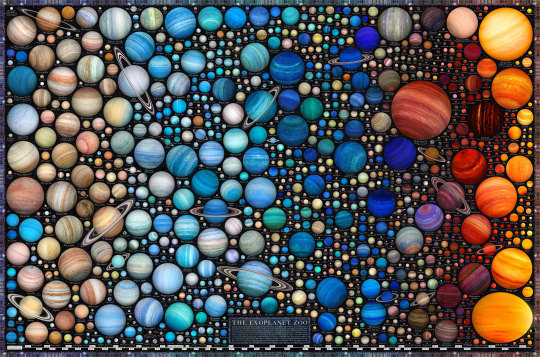
2024 July 8
Exoplanet Zoo: Other Stars Illustration Credit & Copyright: Martin Vargic, Halcyon Maps
Explanation: Do other stars have planets like our Sun? Surely they do, and evidence includes slight star wobbles created by the gravity of orbiting exoplanets and slight star dimmings caused by orbiting planets moving in front. In all, there have now been over 5,500 exoplanets discovered, including thousands by NASA's space-based Kepler and TESS missions, and over 100 by ESO's ground-based HARPS instrument. Featured here is an illustrated guess as to what some of these exoplanets might look like. Neptune-type planets occupy the middle and are colored blue because of blue-scattering atmospheric methane they might contain. On the sides of the illustration, Jupiter-type planets are shown, colored tan and red from the scatterings of atmospheric gases that likely include small amounts of carbon. Interspersed are many Earth-type rocky planets of many colors. As more exoplanets are discovered and investigated, humanity is developing a better understanding of how common Earth-like planets are, and how common life might be in the universe.
∞ Source: apod.nasa.gov/apod/ap240708.html
172 notes
·
View notes
Text
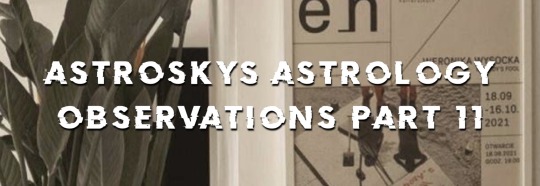
𝐌𝐲 𝐂𝐫𝐞𝐝𝐞𝐧𝐭𝐢𝐚𝐥𝐬
Hello! I’m Skylar. I’m a Kepler College graduate and received my diploma from their school in 2022 but have been studying astrology for about a decade now
My mission is to inform people based on what I’ve learned and help others to gain some of the knowledge I’ve gained in order for them to use astrology as a resource for growth
There’s false stereotypes out there that can often create confusion for aspiring astrologers and I’d like to help people understand how to differentiate which sources are accurate vs which ones aren’t accurate as well
For more information about my account click here to see my masterlist
𝐍𝐚𝐭𝐚𝐥 𝐂𝐡𝐚𝐫𝐭
◈ Planets/Houses don’t just have “a few meanings” they have many more that many people don’t know about. Otherwise astrology would probably be very basic and boring -> beginner astro help
◈ Most astrology information on Tiktok is false. Be careful who you get your information from -> tiktok astrologers with reliable info
◈ Typically twin flames will have a lot of similar placements to one another
◈ Cusps are not a real thing. Only an astrological myth made recently -> more info here
◈ If you’re noticing you don’t really have many long term relationships only flings/short term relationships it could be caused by having Uranus in the 5th/7th house
◈ Jupiter in the 4th house can indicate being the most successful person in your family - money or wealth wise (Ex: Billie Eilish)
◈ Venus sextile Mars is the most flirtatious aspect. This is because sextile aspects can have sexual energy depending on the planets involved (in this case it would), Venus rules over charm/romance, and Mars rules over flirting/lust
◈ The Sun/MC both rule over fame itself. Other placements only indicate things such as attention, attraction, idealization, glamour, etc. but do not DIRECTLY indicate fame as those things can come with OR without fame (they can still be indications depending on the sign/house/degree though)
◈ Both your South Node and Saturn can give insight about your past lives. Chiron tells about karmic wounds made in past lives that were carried into your current one
◈ Aquarius Venus/Uranus in the 7th house can indicate marrying someone that you would’ve never expected to marry
◈ Aquarius venus’ become more romantically attracted to you whenever you get along really well with their friends
◈ People with mercury in the 8th house aren’t big on gossiping typically (depending on other placements)
◈ Many people with saturn or uranus in the 9th house don’t go to college
◈ I’ve noticed a lot of libra and gemini placements are successful dancers
◈ Having your venus conjunct, trine, or sextile neptune can make many people idealize being in a romantic relationship with you
◈ Venus conjunct/square/opposite chiron can indicate a challenging love life before settling down long term
◈ The 9th house mainly rules over religion (the 12th house is more about spirituality) however, since it rules over beliefs as well it can tell a little about your spirituality
𝐀𝐬𝐭𝐞𝐫𝐨𝐢𝐝𝐬
◈ Tantalus (2102) represents having a strong desire for something that’s very out of reach and remains so
◈ Desiderata (344) represents what one desires and desirability. It can give you deeper insight beyond mars
◈ Nyctimene (2150) in the 5th/7th house in Solar Return can indicate you need to leave a relationship that year in order to be happy
◈ Deidre (165574) in the 10th house can indicate being known by the public for your immense feminine beauty - many women who are praised for their beauty have this placement
Venus aspecting someone’s Deidre Asteroid can indicate the Venus person is in love with the Deidre persons immense feminine beauty/power
◈ Actor (12238) in the 6th/10th house can indicate being an actor for a living - ex: timothee chalamet
◈ Juno (3) in the 7th house can indicate a happy marriage (whether it be the first, second, etc it will eventually happen)
◈ Eros (433) at 6° can indicate getting into your first relationship later than most
◈ Reddish (2884) represents things we easily get embarrassed over/embarrassment in general
Asteroid Reddish in cancer can indicate your mom embarrassing you often
◈ Sinon (3391) represents persuasion/convincing someone to let their guard down
◈ Tripaxeptalis (2037) in gemini/sagittarius can indicate an interest in numerology
𝐒𝐲𝐧𝐚𝐬𝐭𝐫𝐲
◈ Your Sun conjunct someone’s Moon can indicate you having a really good/close friendship with the Moon person
◈ Moon conjunct/trine/sextile Moon can indicate having a strong understanding of one another’s emotions
◈ Mars in someone’s 6th/11th house can indicate the Mars person struggles to get along with the 11th house persons friends -> info about 6H friends here
◈ Mercury square Venus can indicate the Mercury person doesn’t have interest in the Venus person romantically. Mercury is something under-looked in Synastry and in general when it comes to love. Not only does it rule over communication but also interests
◈ Mars conjunct Mars can indicate being able to resolve conflict with one another very well
◈ Sun conjunct Ascendant can be a challenging aspect and cause you both to resent one another
◈ Your Sun in someone’s 7th house can indicate a romantic relationship occurring
𝐂𝐨𝐦𝐩𝐨𝐬𝐢𝐭𝐞 𝐂𝐡𝐚𝐫𝐭𝐬
◈ 11th house stelliums can indicate you both have similar political views
◈ Saturn in the 11th house can indicate challenges in your relationship involving difference in desires or struggles involving friends/friend groups/socialization
◈ 9th house stelliums can indicate really good romantic chemistry with one another -> why
◈ Saturn at 0° can indicate a karmic relationship or being together long term. You likely knew one another in a past life as well
◈ If you have chiron in the 7th house you may stay together for a while out of fear of losing one another because you’re so comfortable with one another and thrive off of your partnership together
◈ Cancer ascendant can indicate meeting one another through your family or theirs
◈ Many think capricorn/aquarius stelliums are bad but they can indicate a long term relationship with one another
◈ Jupiter in the 5th house can indicate bringing one another lots of joy
◈ Uranus in the 8th house can indicate being close friends before dating
◈ Lots of 5°/14°/23° can indicate being a good looking couple together
◈ True Node at 11° is a strong indication of twin flames and experiencing multiple past lives together
◈ Mars in the 9th house can indicate having a passion for traveling together

𝗦𝗨𝗕 𝗧𝗢 𝗠𝗬 𝗣𝗔𝗧𝗥𝗘𝗢𝗡

© 𝐚𝐬𝐭𝐫𝐨𝐬𝐤𝐲 𝟐𝟎𝟐𝟑 𝐚𝐥𝐥 𝐫𝐢𝐠𝐡𝐭𝐬 𝐫𝐞𝐬𝐞𝐫𝐯𝐞𝐝
#astro community#astrology#zodiac#astro placements#astrology tumblr#astro chart#birth chart#asteroid astrology#mars#mars astrology#astrology observations#astro observations#astro OBS#asteroid observations#synastry charts#synastry#composite#composite charts
935 notes
·
View notes
Note
I’m crazy about the fact that Maxwell joined si-5 after 6 months of stalking and enormous pressure while Jacobi treats his one year anniversary of joining like it’s his wedding day. Idk what this is saying but I feel like it definitely says something about them and the way they view their places and roles in the power structure and their involvement in si-5
oh Absolutely. this is something i have put So much thought into because most si-5-centric episodes areeee My favorites.
Kepler and jacobi really do just. Work so well together and they way they just cut each other down is so Disgusting and Beautiful. but before i can really talk about that i do want to bring up the circumstance of how their “meeting” in TTBOT that kepler set up was able to create the roots for any of this.
kepler purposefully finds jacobi at his lowest and his most vulnerable (unlike maxwell). refers to him as his friend, starting off with his infamous “long story short”’s, buying him drinks. you could even take the way that he acts with and speaks to jacobi as a little flirtious. he pretends to take a genuine interest jacobi’s life, entertaining his riffing. as far as we know, jacobi and kepler are the only two people who are able to speak to each other in such a way that’s almost poetic. they finish each others sentences, and on jacobi’s side of things—
**i want to mention kepler quoting king lear in act 1 scene 4 specifically here. this is a little off topic but i also want to talk about it. TTBOT is also a good parallel of this scene because it lays the foundation for jacobi’s undying loyalty for kepler and his destructive nature and how it compliments keplers focus for only creating what matters as they both mirror kent and king lear respectively. this scene also touches on introducing keplers fatal flaw: his pride
—to directly quote kent here, he’s able to “keep secrets…ruin an elaborate story by trying to tell it, and deliver a plain message bluntly”. jacobi is essentially the filter for kepler, has he’s molded him as such. really, jacobi has trusted kepler from the beginning; i mean, how many other guys do you know that are also military men who go to shitty pubs in san francisco in the middle of the afternoon? jacobi is putty in keplers hands. kepler likes control, and when it comes to kepler, jacobi likes giving it up. [insert some powerplay joke here based on their innuendo-esque discussions about punishment]
moving on from TTBOT specifically, though, it makes sense that they have such a relationship. kepler introduces himself as jacobi’s savior. kepler is the reason he’s found a job, kepler is the reason he’s found his best friend who is practically his sister, kepler is the reason for.. who he is. (its also definitely related to the cycle of abuse kepler gets caught in due to his proximity to cutter.) kepler manipulates jacobi’s desperate need for approval constaaaantly so their power dynamic mimics that of two people who put each other on pedestals just building them higher and higher. kepler is obsessed with keeping up his image so jacobi doesn’t lose trust in him, and jacobi is obsessed with knowing that this image is true so he can continue to mirror it. he separates himself from his personhood to get as close to kepler as possible. in an ama somewhere as well shachat says that the two *need* special attention from each other for the si-5 to even function as a team! codependent freakssss!!!
to get to a general point about power structures, though, jacobi and kepler are so high up because they work together as a unit essentially sharing a status when the cutter administration isn’t present. neither of them believe that maxwell is “beneath” them, however, she simply isn’t able to match the influence or connection they have. maxwell is a skeptic, she’s a *woman* who’s been wronged so many times by the system that she has a general distrust of everyone and everything around her (excluding hera because… you know). and thats not to say she doesn’t genuinely value her relationship with jacobi either, but she teases him for his undying loyalty to kepler and their genuine appreciation for goddard. she’s only there to do her job as kepler is the only person giving her the means to do it. within the system, jacobi and maxwell are coworkers and kepler is their superior. however, socially, jacobi is above maxwell because of how much kepler and jacobi value each other.
not to paraphrase mitski here but… you know. jacobi is keplers dog. he believes in him like a god. and kepler will cut him down like he is
#why bring a ballistics expert onto a SPACE MISSION#whatever whatever#sorry this is a lot#kepcobi#warren kepler#daniel jacobi#wolf 359#rose speaks
75 notes
·
View notes
Text
I've been taking writing seriously for eight years. Here are eight lessons I've learned.
*Buckle up, this is going to be a long one*
As I squinted at my phone in the darkness, I stared at my Calendar. Blocks of red and pink were blocked into my schedule: do schoolwork, take a quick break, attend an online co-op class, sign up for a school workshop, finally read the first chapter of that thick textbook I bought.
Then, I looked above it all, the day of significance in magenta.
"Anniversary of Secrets." September 9th. The day I chose to take writing seriously. Between unfinished stories on loose-leaf paper, and untitled documents of characters on my desktop, writing had only been a spur-of-the-moment activity.
But then, September 9th came along. From visions of girls riding dragons and comments of classmates writing their own stories, I realized I could be like them. I could take writing as seriously as they did, spending more time on my stories than fixated on my favourite series.
In fact, writing became a fixation of my own. Over these eight years, I have watched countless videos, read a few books, and wrote hopefully around a couple hundred thousand words. As well, I have amassed a fair amount of writing advice. Here are eight of the lessons I learned over the years.
Lesson #1: Outline First, Write Later.
Ideas popped into my head like a game of whack-a-mole. They popped in and out whenever they pleased. I dreamed of cat-eared superheroes, of zodiac themed dystopias, of strange, American-style Isekais before I knew what that word meant.
My attempts to outline the story were inflated by my urge to write it. By the time I started writing my first official project, I decided to write the outline and FINISH the outline before jumping into the story.
Lesson #2: Embrace Diversity
If you've been on the Internet in literature or writing related circles, it's hard to avoid the topic of diversity, and for a good reason. Diverse situations and characters create new perspectives for readers and writers alike.
I learned to embrace diversity through a video made by Jenna Moreci:
After watching this, I thought more about my character's racial and ethnic backgrounds. Along with that, my characters became much more queer, and far more neurodivergent than I could've fathomed back in the day. Their backstories and family situations are more diverse as well: some of them were in foster care. Others came from big families.
The most important thing is to not do this offensively, and honour every culture you come across that's different than yours. Thankfully, there are plenty of resources online, such as Writing With Color(https://www.tumblr.com/writingwithcolor).
Lesson #3: Take Inspiration From Your Favourite Things.
My first story, Secrets, took direct inspiration from the books Harry Potter, Bone, Percy Jackson, Masterminds, and Eragon, respectively. But my second big project became a result of my Voltron obsession (which, assuming you're reading this on Tumblr, I'm sure you're familiar with).
The story formed as a space opera with alien planets I invented myself, and a human species who evolved to conditions on Kepler-22b. I'm not going to deny that I drew inspiration from the "Leakira and the Defenders Of Tomorrow" AU. Though this project is now its own being, I cannot deny where its origins came from.
Lesson #4: Do NaNoWriMo. Seriously.
First of all, I'd suggest staying away from the actual site. There have been numerous controversies, including demonstrating support of AI for creative works, and predatory behaviour on its forums. That doesn't mean we cannot still participate in writing a novel within a month.
Doing an unaffiliated one-month writing challenge will likely not help you get better at writing. Quality over quantity, after all. However, it will help to create a writing habit, and force you to think of unorthodox situations where you could write words… like, on the bus, in a bathroom stall, or in a waiting room.
Lesson #5: This is not going to be a career. Not for a while.
I was a 17-year-old, frothing at the mouth, obsessed with what my hands could produce at the click of keys. I wanted this to be my career. Badly.
However, college loomed around the corner, and I could not fathom spending so much money to learn creative writing in university, when it would have so little pay-off later down the line. Plus, I knew the field was a competitive one, and boy, I was not ready to compete.
If you want writing to become a career one day, go for it. Work hard on your writing. Focus on it like a bird focuses on looking for its worm. Keep in mind, however, whether the pay-off will be worth it for you.
For example, if you are willing to compete and set yourself apart, it would be beneficial to study English, Creative Writing, or Journalism at a university. You could become a copyeditor, a journalist, or a teacher, with some extra learning. However, what if becoming an author feels unstable? You could consider a career in a transferrable field such as office administration, library technician, marketing, psychology, or accounting.
Lesson #6: Fanfiction is good.
When I got into the game Terraria, I spent many hours traversing the right side of my world and building cube-shaped houses, and far too many hours before I thought I was powerful enough to fight the Eye Of Cthulhu. That aside, I started writing fanfiction inspired by the franchise.
Surely, there’s not much canon material regarding the NPCs whose names change when they get killed. So, I made my own. I elaborated on characters that had pre-existing relationships and made up my own where there weren’t any. It was a brilliant practice in writing when none of my other ideas seemed appealing.
I have since finished said fanfiction, but I still write about certain fandoms from time to time. It helps to have an outlet for creative ideas that would not fit your other stories.
Lesson #7: Don’t Fear The Critiquer
Reading my works aloud startled me to the bone. Thankfully, my friend clarified that this writing club gave good critique on his own worldbuilding. So, I showed up, and oh, am I ever so thankful I showed up, because it has, quite literally, changed the way I see writing.
Reading out my writing to others has made me better at sharing, and at accepting critique. I received a lot of praise, and I also realized a lot of mistakes. Most of all, I learned not to fear what people thought of what I wrote: chances are they’d like at least part of it.
Lesson #8: Every little bit counts.
After many years of taking it slow, life started to get busy again. Life became more cluttered, and I fought to balance my classes with any extracurriculars I may have had, with therapy appointments and going to the doctor’s to sort out health shenanigans, with the full time summer job I had, and with nurturing my relationships.
If you had a hard time reading that sentence, that’s what my life has been like for the past year or so. Busy, cluttered, hard to organize, but still manageable in small chunks. This is what writing while busy should look like. Little bits and pieces of writing, whether it be in a chapter or short stories.
The Big Conclusion
Plot twist: These eight lessons I learned were relevant to each of my eight years spent learning the craft. I spent them embracing the craft, learning to make good settings, and understanding how to create interesting plots. At the same time, I have yet to self-publish any fiction other than a short story.
Still, I’m happy with the progress I’ve made in these past 8 years. It’s been a long journey, but with every year, I learn so much more.
If you’re looking for where to start, this is where you should: whether it’s writing down that random idea that’s been sitting in your head, or scribbling down a drabble about the rain outside, just take one first step.
#writing#writers#writing advice#writing tips#writing tip#on writing#writers on tumblr#tip#tips#writerscommunity#writing lessons#lessons#life lessons#wisdom
49 notes
·
View notes
Text
Skinnamarinkstump Linkdump

I'm on a 20+ city book tour for my new novel PICKS AND SHOVELS. Catch me TODAY (Feb 15) for a virtual event with YANIS VAROUFAKIS, and on MONDAY (Feb 17) for an event at KEPLER'S in MENLO PARK with CHARLIE JANE ANDERS. More tour dates here.

It's Saturday and I'm on a book tour, and the world is in chaos, and there are more links to write about than I could fit in to this week's newsletter, so time for a cubic linkdump, the 27th such:
https://pluralistic.net/tag/linkdump/
Let's start with the best thing I saw all week: a 3D-printed, spring-loaded, clockwork chess pawn that uses a magnet to sense when it has reached the end of the board and SPROING! turns into a queen:
https://www.youtube.com/watch?v=CSOnnle3zbA
The whole video is a fascinating account of the design process, from idea to prototype to finished item, but if you're impatient and want to skip right to the eyeball kick, it's at 12:27-12:35. And if you want to print your own, the files are $12 (cheap!):
https://www.patreon.com/WorksByDesign/shop/queen-pawn-3d-printing-files-614491?source=storefront
Regrettably, not every tech project is a good one. This week, Google abandoned its AI ethics pledge. Unlike most AI ethics pledge, which are full of nonsense about not accidentally creating a vengeful god that turns the human race into paperclips, Google's AI pledge was actually very important, in that the company promised not to make AI that violates human rights, international law, or privacy. There comes a point where harping on Google's abandoned "don't be evil" motto can feel a little hacky, but in this case, I'll make an exception. My EFF colleague Matthew Guariglia tears Google a much-deserved new AIhole over this latest heel turn:
https://www.eff.org/deeplinks/2025/02/google-wrong-side-history
Not all bad technology is evil. Some of it is merely very, very stupid. How stupid? Check out Thom Dunn's Wirecutter review of The Heatbit Trio, a space-heater that uses Bitcoin-mining GPUs to generate some of its heat, very slightly offsetting the cost of warming your room – but at a rate that would take decades to recoup the $700 price-tag. Thom got some spicy quotes from Molly White for this one – possibly the first time she's been cited in a home appliance review:
https://www.nytimes.com/wirecutter/reviews/heatbit-space-heater-review/
Staying with crypto freaks for a moment here, Adam Levitin dissects the cryptocurrency "industry"'s latest chorus of aggrieved whining over "debanking":
https://www.creditslips.org/creditslips/2025/02/debanked-by-the-market.html
As Levitin writes, banks aren't kicking cryptocurrency "companies" off their books because the government wants to punish them. Banks have a very good reason to want to avoid doing business with high-dollar scams that have highly correlated implosions, which is to say, times when everyone wants their money back from the cryptocurrency "company" the bank is handling charges for. For a longer explanation that gets into the nitty gritty of bank supervision, check out Patio11's excellent, detailed explainer:
https://www.bitsaboutmoney.com/archive/debanking-and-debunking/
As all the real heads know, "crypto means cryptography," and cryptographers continue to contrive privacy marvels. This week, Kagi – the best search engine, a million times better than Google – released a Privacy Pass authentication plugin, which lets you login to Kagi and run searches without Kagi being able to connect any of the searches you make with your account:
https://blog.kagi.com/kagi-privacy-pass
As an sf/crime writer who sometimes (often) searches for information on committing ghastly crimes and 'orrible murders, the fact that my favorite search engine will be technically incapable of tying those searches to my identity is quite a relief. Read my review of Kagi here:
https://pluralistic.net/2024/04/04/teach-me-how-to-shruggie/#kagi
If you're one of those marvel-contriving hackers, cryptographers, security researchers or tinkerers, you should really consider attending this summer's Hackers on Planet Earth (HOPE), 2600 Magazine's (now) annual (formerly biennial) hacker con. They've just posted their CFP – get those submission in!
https://www.hope.net/cfp-talks.html
Well, I have to post this and get ready for this morning's virtual book tour event with Yanis Varoufakis:
https://www.youtube.com/watch?v=xkIDep7Z4LM
But before I go, one more link: Kevin Steele's 2005 essay on Hypercard, "When Multimedia Was Black & White," an absolute classic, and a beautiful meditation on the art and promise of early hypertext:
https://web.archive.org/web/20240213190609/http://www.kevinsteele.com/smackerel/black_white_00.html
I've known Kevin for most of my life, long before he helped found Mackerel, the pioneering Toronto multimedia company. Long after Mackerel, Kevin went on making wonderful things. In 2023, he published a monumental act of portraiture – a "sequential art" time-series of panoramas of Toronto's hip, ever-changing Queen Street West strip:
https://pluralistic.net/2023/09/13/spadina-to-bathurst/#dukes-cycle
Comparing Kevin's more recent work with that lovely old essay reveals deep correspondences and the progress of a unique and creative soul.

If you'd like an essay-formatted version of this post to read or share, here's a link to it on pluralistic.net, my surveillance-free, ad-free, tracker-free blog:
https://pluralistic.net/2025/02/15/intermixture/#debunking-debanking

#pluralistic#bitcoin#kevin steele#mulitmedia#patio11#adam levitin#thom dunn#eff#wirecutter#linkdump#linkdumps#google#ai#dont be evil#hope#hackers on planet earth#hackercons#privacy pass#kagi#search#debanking#chess#3d printing#clockworks
155 notes
·
View notes